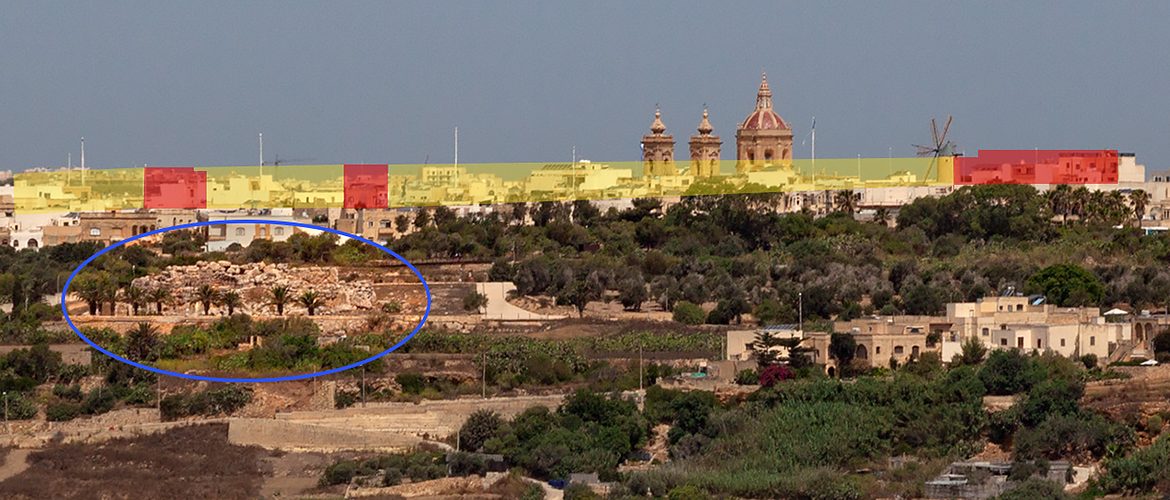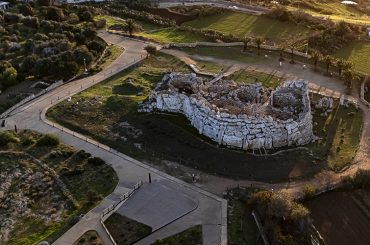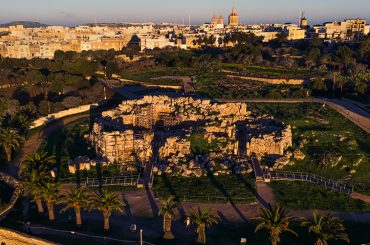The Chamber of Architects has issued a directive to architects aimed at protecting the setting, or buffer zone, of Ggantija Temples from various applications for blocks of flats that the Planning Authority is currently processing. The blocks of flats are proposed for neighbourhoods at the periphery of the temple that consist of two-storey, baroque townhouses.
I felt I could not let this go
Andre Pizzuto, president, Chamber of Architects
The directive is given teeth by the power of sanction: any architect who proposes development that would mar the setting of the temples would potentially be subject to proceedings of professional misconduct. A finding of professional misconduct could lead to a sanction ranging from admonishment to revocation of warrant.

The directive draws attention to the Superintendence of Cultural Heritage, which has taken inconsistent positions on proposed developments in the buffer zone of Ggantija Temples.
Contacted for comment by this website, the president of the chamber, Andre Pizzuto, said: “We have been following the debate about the project [block of flats] near Ggantija Temples and felt that, as a Kamra tal-Periti, we had to carry out our duty. As a president I felt that I could not let this go, and the council was unanimous in its support for the directive.”
Pizzuto, who was recently overwhelmingly elected for a new term of president of the chamber, added: “Aside from issue of planning, we also looked at the issue from the point of view of processional practice, which is what we consider the proper or correct way to practice architecture professionally. We have to look after our heritage. It is one of the responsibilities that arises from the law passed in December of 2022.”
The directive holds that any developments in the buffer zone of Neolithic temples has to be “in proportion” to the surroundings in terms of height, massing, and bulk.

This point is then expanded into what would constitute professional misconduct. This includes “development that would alter the physical, visual or environmental integrity of the megalithic temples, their buffer zones and surrounding landscape.” This point tackles the very idea of having blocks of flats in the neighbourhoods within the buffer zone of Ggantija Temples. At present the area consists of two-storey townhouses with baroque features, and multi-storey blocks of flats would alter the character or visual integrity of the buffer zone.
Another point specifies that “development that would alter the views or vistas of and from the megalithic temples” could constitute professional misconduct.
In this case, blocks of flats that are five storeys high – there are currently three proposals for five-storey blocks of flats – would open the way for further five-storey blocks of flats that would cumulatively mar the setting and vista from and to the temples.
The long-distance vista of the Ggantija Temples is one of the quintessential views of Gozo, and part of the temples’ attractiveness and setting: the temples with their megalithic stones set among fields, the rows of two-storey townhouses behind them and, further in the backdrop, the baroque town church and Ta Kola Windmill rising over the townscape.

This vista, or view, would be marred even if the proposed blocks of flats is reduced to four-storeys, something that draws attention to what the Superintendence of Cultural Heritage wrote to the Planning Authority last summer. At the time it gave its blessing to a block of four floors situated 30 metres from the windmill and within the buffer zone of Ggantija Temples.
The directive specifies that architects have to consult with heritage authorities, including Heritage Malta and the Superintendence of Cultural Heritage. And this draws attention to the inconsistent, fickle position of the Superintendence in the two of the five planning applications that have advanced most in the planning process.

In the case mentioned above, situated 30 metres from the windmill, the Superintendence gave its blessing to the four-storey block of flats even though, a year earlier, it opposed a building further away from the temples and the windmill of similar height and lesser bulk. This website made detailed revelations of that case in an investigative article published last summer (this website’s revelation eventually led the Planning Authority board to hold off on a decision and reopen consultations with the Superintendence).
In another case, a proposed block called Ggantija Heights, the Superintendence asked for the removal of the entire top floor from the proposal and the splitting of the buildings with its wide frontage into two blocks. Then, six months later, after the applicant removed one penthouse out of eight from the top floor (not the entire floor as the Superintendence had asked), the Superintendence changed its position and said that the proposal was acceptable.
Such inconsistencies may make the Superintendence the weakest link not only in the Chamber of Architects’ directive, but also in the planning circular about developments in the scheduled setting of heritage buildings. In similar fashion to the Chamber’s directive, the planning circular published in May of 2020 also promotes the concept that new developments have to conform with other buildings in the neighbourhood, particularly when it comes to height.
In the latest letter about yet another proposed block of flats in the buffer zone, the Superintendence as well as Heritage Malta did not take a strong position against the particular block of flats as such. They wrote that the proposed development has "limited impact" on heritage sites, but then expressed concern at the "domino effect creating significant impact on views and vistas as seen from important cultural heritage sites of Ggantija, Il-Mithna Ta Kola, and the Xaghra Circle."
Donate to Ggantija Streetscapes
The investigations of this website - part of a series called Ggantija Streetscapes - played a role in revealing and rallying the effort to fight proposals detrimental to the Neolthic temples' settings. The findings also played a role in holding off two of the applications that appeared in front of planning boards with a recommendation to approve. Sustain this project by donating as little as €5.





